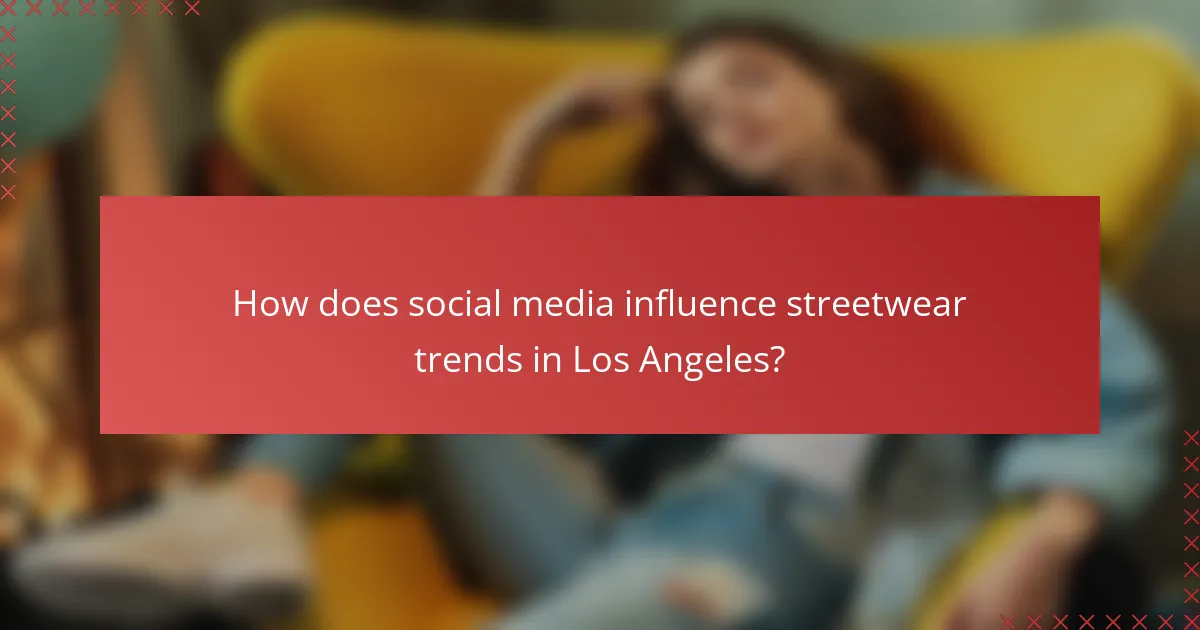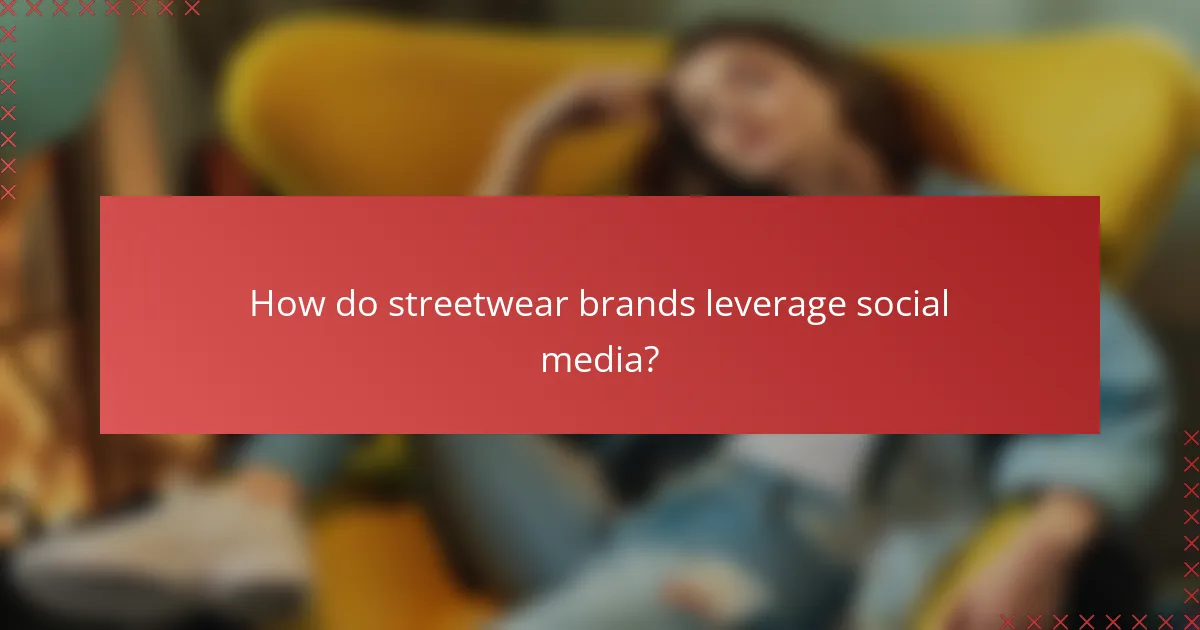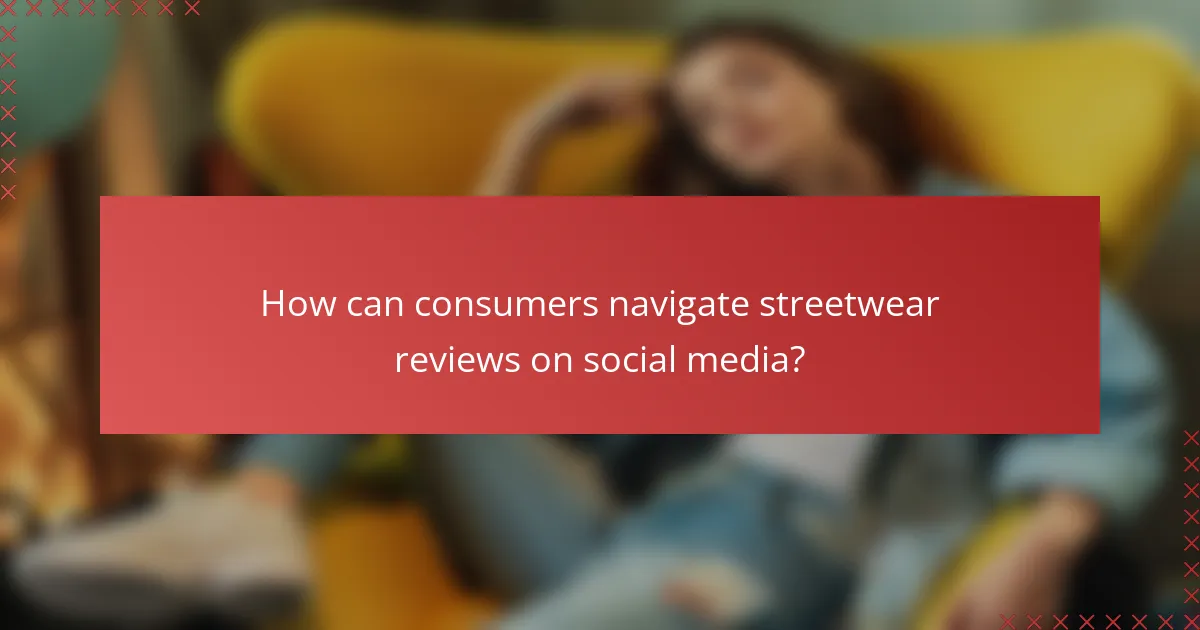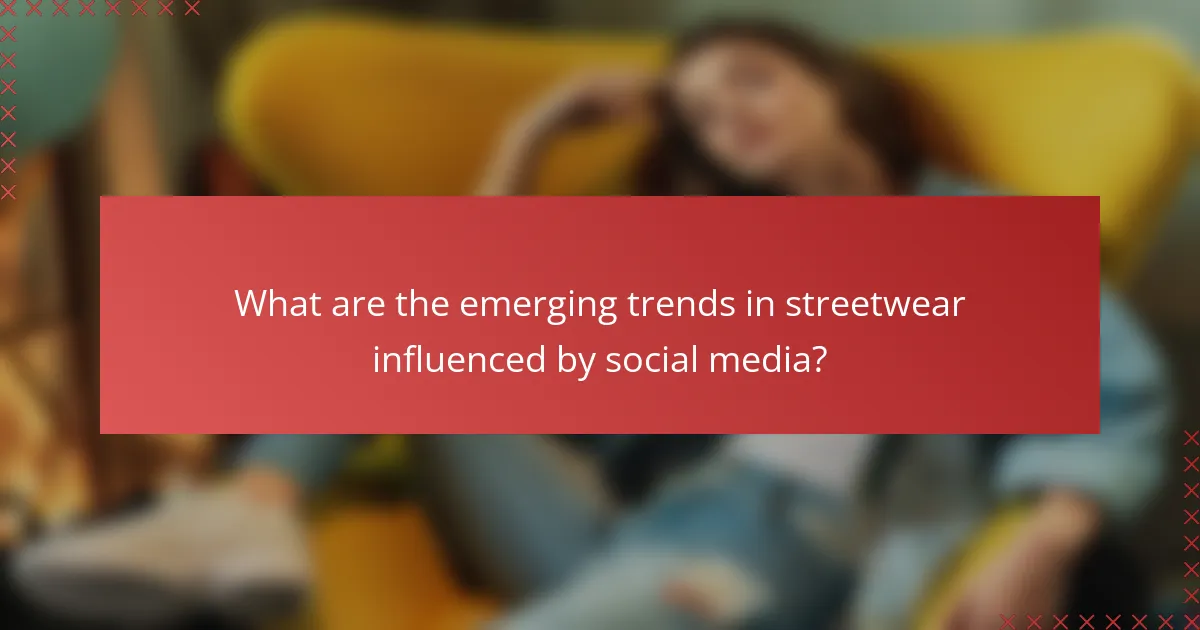Social media plays a crucial role in shaping streetwear trends, particularly in urban centers like Los Angeles, by facilitating the rapid exchange of styles and ideas. Platforms such as Instagram, Twitter, and TikTok not only serve as venues for streetwear reviews but also enable brands to connect directly with consumers, fostering a vibrant and ever-evolving fashion landscape.

How does social media influence streetwear trends in Los Angeles?
Social media significantly shapes streetwear trends in Los Angeles by providing a platform for rapid dissemination of styles and ideas. It allows brands and consumers to interact directly, creating a dynamic environment where trends can emerge and evolve quickly.
Real-time trend tracking
Social media platforms enable brands and consumers in Los Angeles to track streetwear trends in real-time. Tools like Instagram and TikTok allow users to see what styles are gaining traction, often through hashtags or trending posts. This immediate feedback loop helps brands adjust their offerings to meet current consumer preferences.
For instance, if a particular sneaker style starts trending, brands can quickly produce similar designs or limited editions to capitalize on the hype. This responsiveness is crucial in a fast-paced market like streetwear.
Influencer collaborations
Influencer collaborations are a powerful way social media impacts streetwear trends in Los Angeles. Influencers often have large followings and can sway consumer opinions, making their endorsements valuable for brands. Collaborating with popular figures can elevate a brand’s visibility and credibility.
For example, a streetwear brand might partner with a local influencer to launch an exclusive collection, generating buzz and driving sales. This strategy not only promotes the brand but also aligns it with the influencer’s style, attracting their audience.
User-generated content
User-generated content plays a vital role in shaping streetwear trends by allowing consumers to share their own styles and interpretations. Platforms like Instagram encourage users to post photos wearing their favorite streetwear pieces, creating a sense of community and authenticity.
This content can influence others’ purchasing decisions, as potential buyers often look to their peers for inspiration. Brands can leverage this by featuring user-generated content in their marketing, fostering a deeper connection with their audience and encouraging more engagement.

What are the key platforms for streetwear reviews?
The main platforms for streetwear reviews include Instagram, Twitter, and TikTok. Each platform offers unique features that influence how trends are discussed and shared within the streetwear community.
Instagram’s visual impact
Instagram’s focus on visuals makes it a powerful platform for streetwear reviews. Users can showcase outfits, brand collaborations, and product releases through high-quality images and videos, creating a strong visual narrative around trends.
Brands often collaborate with influencers who have large followings to promote their latest collections. This strategy not only boosts visibility but also shapes consumer perceptions and desires regarding specific streetwear items.
Twitter for real-time discussions
Twitter serves as a hub for real-time conversations about streetwear. Users can share instant reviews, opinions, and news updates, allowing trends to evolve rapidly based on community feedback.
The platform’s character limit encourages concise commentary, making it ideal for quick reactions to drops or events. Hashtags play a crucial role in organizing discussions, enabling users to follow specific trends or brand launches effectively.
TikTok’s viral trends
TikTok has emerged as a major player in shaping streetwear trends through its viral content. Short, engaging videos can quickly propel a specific style or item into the spotlight, often driven by challenges or popular sounds.
Users frequently showcase their outfits and styling tips, making it easier for trends to spread among younger audiences. Brands that leverage TikTok effectively can reach a vast audience and create a buzz around their products in a matter of days.

How do streetwear brands leverage social media?
Streetwear brands utilize social media to enhance visibility, engage with their audience, and drive sales. By creating targeted campaigns and fostering community interaction, these brands effectively tap into trends and consumer preferences.
Targeted advertising strategies
Streetwear brands often employ targeted advertising strategies to reach specific demographics on platforms like Instagram and Facebook. By analyzing user data, they can tailor ads based on interests, location, and purchasing behavior, ensuring that their promotions resonate with the right audience.
For instance, a brand might focus on urban youth in major cities, using vibrant visuals and influencer partnerships to attract attention. This approach can lead to higher conversion rates, as ads are more relevant to the viewer’s lifestyle and preferences.
Engagement through storytelling
Storytelling is a powerful tool for streetwear brands to create emotional connections with consumers. By sharing the brand’s history, values, and the inspiration behind collections, they can foster loyalty and a sense of belonging among their audience.
Brands often use social media to showcase behind-the-scenes content, customer testimonials, and collaborations with artists or designers. This not only humanizes the brand but also encourages followers to share their own stories, amplifying the brand’s reach organically.
Community building initiatives
Community building is essential for streetwear brands, as it cultivates a loyal customer base. Many brands create online forums, host events, or engage in social causes that resonate with their audience, reinforcing a sense of belonging.
For example, a brand might launch a limited-edition product with proceeds going to a local charity, encouraging followers to participate and share their involvement on social media. This not only boosts brand image but also strengthens community ties, making customers feel like they are part of something larger.

What role do influencers play in streetwear reviews?
Influencers play a crucial role in streetwear reviews by shaping trends and guiding consumer choices through their endorsements and personal style. Their reach and credibility can significantly impact brand perception and sales within the streetwear community.
Authenticity and trust
Authenticity is key in the influencer-streetwear relationship. Influencers who genuinely connect with the streetwear culture tend to build trust with their audience, making their reviews more impactful. Consumers are more likely to engage with brands recommended by influencers they perceive as authentic and relatable.
To maintain authenticity, influencers should focus on brands that align with their personal style and values. This alignment fosters a sense of trust, encouraging followers to consider their recommendations seriously.
Shaping consumer perceptions
Influencers significantly shape consumer perceptions of streetwear brands by curating their online presence and showcasing specific styles. Their content often highlights the latest trends, making certain brands more desirable. This influence can lead to a shift in how consumers view a brand’s reputation and quality.
For example, when a popular influencer wears a particular streetwear item, it can create a buzz that elevates the brand’s status. Consumers may start associating that brand with exclusivity or trendiness, which can alter purchasing decisions.
Driving sales through endorsements
Endorsements from influencers can drive sales by creating a sense of urgency and desirability around streetwear products. When influencers promote limited-edition drops or collaborations, their followers often feel compelled to purchase quickly to avoid missing out.
Brands can leverage this by collaborating with influencers who have a strong following in the streetwear niche. Effective campaigns often include exclusive discount codes or early access to products, incentivizing followers to buy while also tracking the effectiveness of the influencer’s promotion.

How can consumers navigate streetwear reviews on social media?
Consumers can effectively navigate streetwear reviews on social media by focusing on credible sources, understanding brand collaborations, and evaluating user feedback. These strategies help in discerning quality information from the noise prevalent in online discussions.
Identifying credible sources
To identify credible sources for streetwear reviews, look for established influencers, reputable fashion blogs, and verified accounts. Influencers with a strong track record in streetwear often provide insights based on experience rather than trends.
Check the engagement levels on posts; high interaction rates with thoughtful comments can indicate a trustworthy source. Avoid accounts that primarily focus on sponsored content without genuine reviews.
Understanding brand collaborations
Brand collaborations in streetwear often result in unique pieces that can influence trends and reviews. Familiarize yourself with the brands involved and their reputations to better assess the quality and desirability of the products.
Research past collaborations to see how they were received by the community. For example, a collaboration between a well-known streetwear brand and a luxury designer typically garners significant attention and can impact resale values.
Evaluating user feedback
User feedback is crucial for understanding the real-world performance of streetwear items. Look for reviews that detail specific experiences, such as fit, comfort, and durability, rather than vague opinions.
Utilize platforms that aggregate user reviews, and consider the overall sentiment rather than individual comments. A mix of positive and negative feedback can provide a balanced view, helping you make informed purchasing decisions.

What are the emerging trends in streetwear influenced by social media?
Social media is reshaping streetwear by amplifying trends and fostering direct engagement between brands and consumers. Platforms like Instagram and TikTok are crucial for showcasing new styles, promoting sustainability, and influencing purchasing decisions.
Sustainable fashion movements
Sustainable fashion movements are gaining traction in the streetwear scene, driven largely by social media awareness. Brands are increasingly adopting eco-friendly materials and ethical production practices, responding to consumer demand for transparency and responsibility.
For instance, many streetwear labels now focus on upcycling and using organic fabrics, which can reduce environmental impact. Collaborations with sustainability advocates on social media further highlight these initiatives, attracting a conscious consumer base.
To engage with sustainable streetwear, consider brands that prioritize eco-friendly practices and transparency in their supply chains. Look for certifications like GOTS (Global Organic Textile Standard) or Fair Trade to ensure your purchases align with sustainable values.
